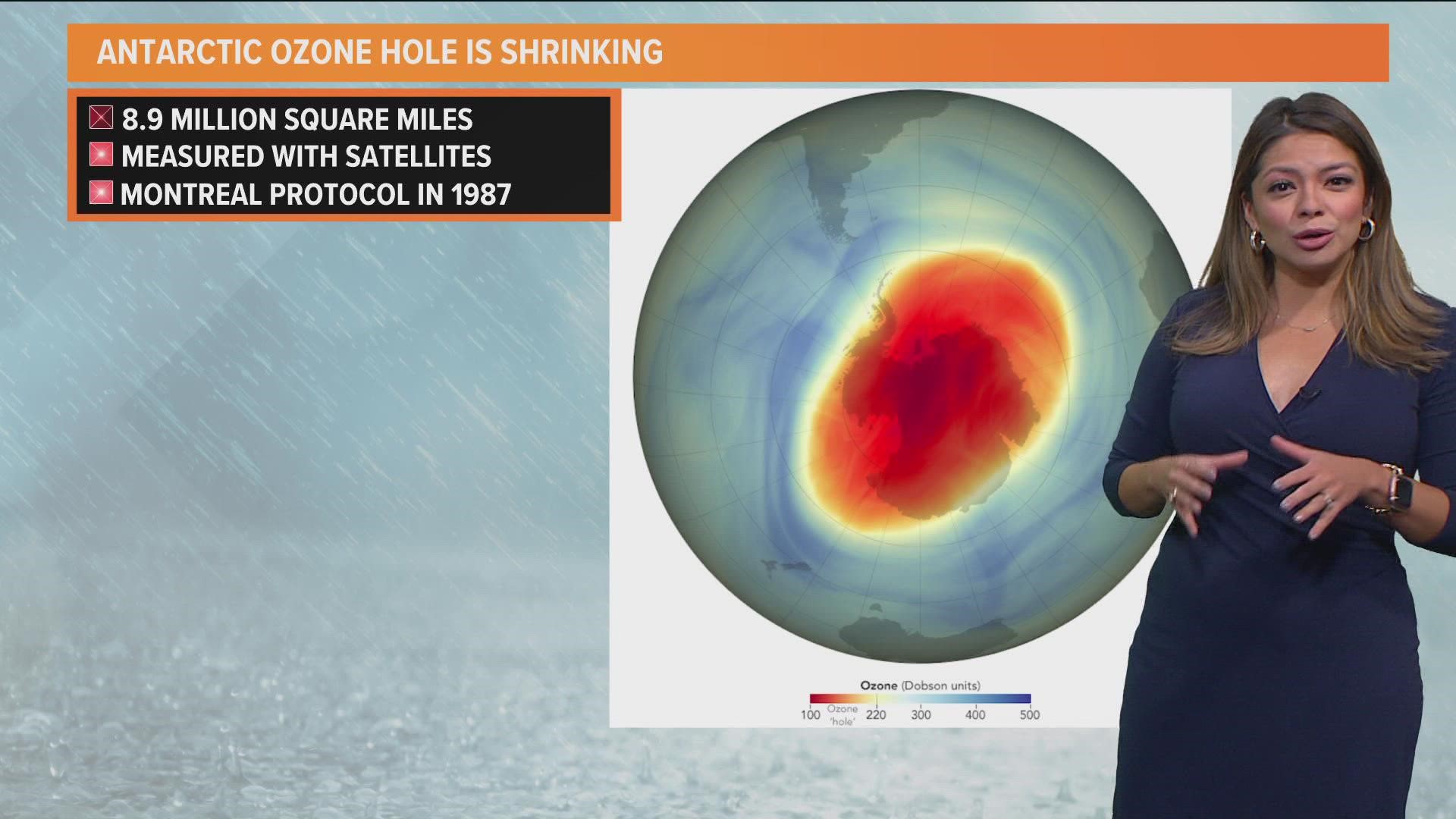DALLAS — NOAA (National Oceanic and Atmospheric Administration) released a statement this week stating the Antarctic Ozone hole is slightly smaller in 2022.
Measurements show that the Antarctic ozone hole is 8.9 million square miles, which is smaller on average than it was in the late 1990s and early 2000s. There are seasonal variations and different weather patterns that vary the size through the year.
What is the ozone layer & how is it measured?
The ozone layer is found in the stratosphere and it is what protects our planet from the sun's harmful ultraviolet rays.
Satellites and ozonesondes are used to measure the ozone layer. Satellites take images of the ozone layer over time while ozonesondes are released from the ground to measure its thickness.
Factors affecting the ozone layer
Ozone is depleted every year. Chlorine and bromine from human-produced compounds are released and create reactions on polar clouds. This chemical reaction depletes the ozone layers when the sun rises at the end of the southern hemisphere's winter. This is what causes the fluctuations throughout the year.
On average, the size of the ozone hole is smaller and scientists say it has to do with policy. The Montreal Protocol was adopted in 1987. It banned the release of harmful, ozone-depleting chemicals called chlorofluorocarbons or CFCs for short. It remains the only international treaty ratified by every country on earth.

